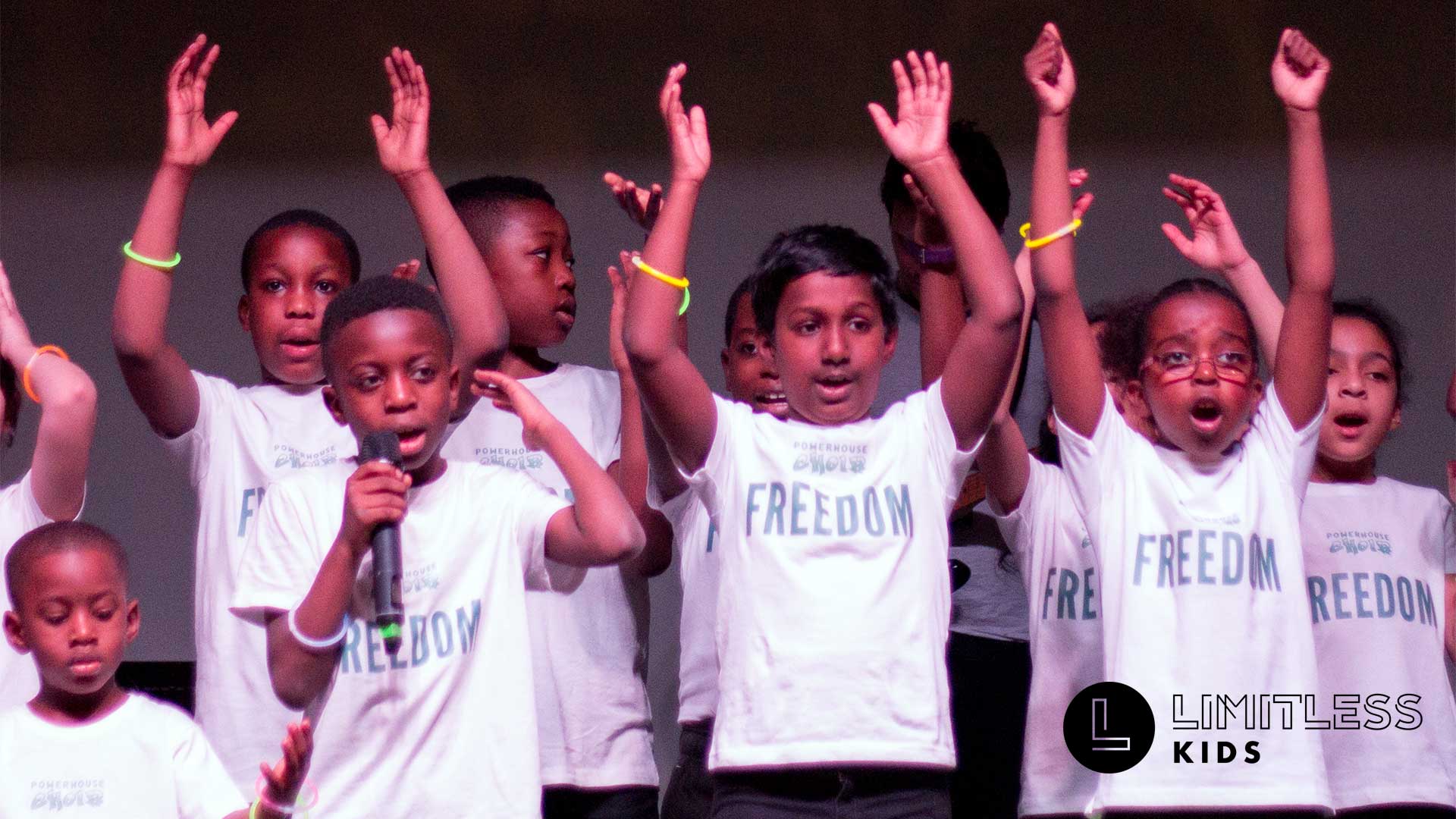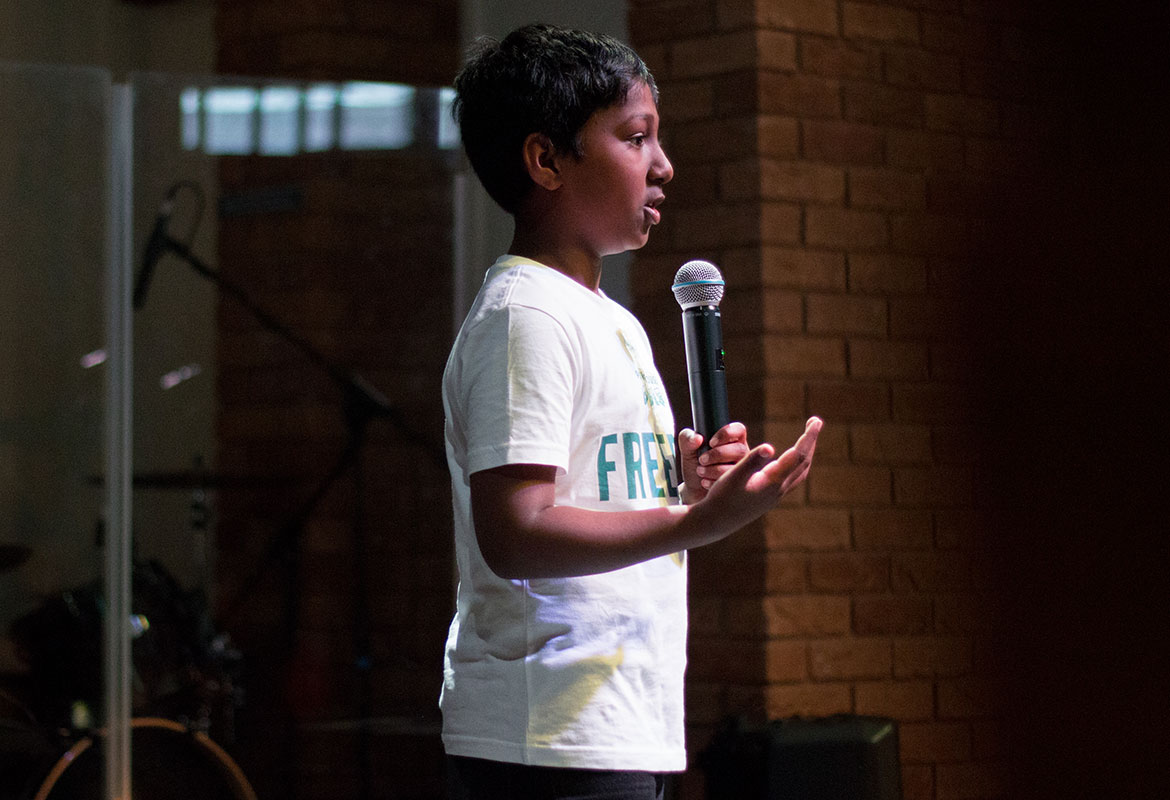
LIMITLESS KIDS - Emma Bacon
10 practical steps to worship in your children’s ministry
Emma Bacon, full time children’s worker at Elim Church Coventry, shares some valuable tools to lead children in worship.
Here are Emma's 10 practical steps to worship in your children’s ministries. Which ones will you use?
1. No comparison - where are you as a church?
It’s really important to start where you are at in your individual setting. Where are your kids in terms of their relationship with God? Yes, we don’t want to downplay worship but equally, we do not want to feed them solids before they have digested the milk.
They can’t run before they can walk. You may be at the beginning of the worship journey with your kids, or you may be further on in the journey. No matter where you are, it’s important that we remember the foundational principle that worship is not about us, it’s about God! Never compare your journey to someone else’s journey. Focus on where your kids are right now and allow God to move within that.
2. A safe space
Allow the kids to use your setting as a safe place to ‘practice’ worship. Create space to be still and listen to God and also to explore worship styles and postures.
Allow opportunities for the kids to sing out, to explore lyrical content and ask questions. Creating this safe space will help to break down barriers of fear and bring personal revelation to the kids as they begin to learn what it means for them to worship freely.
3. The secret place
Talk to the children about having their own quiet time with God. This is key, and something I think can often be missed with kids. It is important that we encourage the kids to spend time with God during the week – reading, praying and worshipping in their quiet time. When you encourage your kids to do this, you will begin to see a shift as they come together and worship within your setting.
4. Make worship fun through visuals and interaction!
Give out worship challenges - kids love challenges! Get them to create a tune for a scripture or even search for worship songs on YouTube and share. Use lyrical worksheets which the children can take home and do with their parents. This is another way to go deeper in exploring what they sing. Practical, visual and interactive activities are useful in encouraging children to get involved and begin to engage. Using props, actions or sign language are other great ways to engage children. And finally... jumping! Kids love jumping!

5. Child led worship
Get the children to help lead. This may be in choosing the songs, going on the sound desk or through doing the actions and singing up front.
6. New songs
Allow opportunities for children to sing out their own songs - you will be surprised how God moves in times like this. We had a session one Sunday when we were making declarations through song and one of our children who has autism came up to me, took the microphone and started singing: “His name gives us the power, His name gives us the victory.” This then led to all our kids stomping around the room, singing these words. God uses every child, no matter what their need is.
7. The wider church
Get the wider church involved in the vision. We have begun to set a culture in our church where the adults and children are seen as one sound. We try to set a culture in which children singing is not just seen as cute, but powerful! Seek out those kids with a heart to worship and encourage them to lead. We had one child who wrote a song and led our congregation in worship. The adults still sing that song now!

8. It’s a journey
You don’t have to be musical to draw out the gifts in the children. Always remember that it’s a journey and it’s ok not to see every child engaged every Sunday. Just because the children may not seem engaged, doesn’t mean God is not moving. You are sowing seeds!
We had a worship morning recently where it felt like there was a barrier up on the kids. They seemed distracted and disengaged but we kept going. After an hour and fifteen minutes, just five minutes before the end of the session, we saw this barrier come down as we shared the testimony of Jaxon and sung ‘we raise a hallelujah’ over our own prayers and battles.
Sometimes it takes time to break through and that’s ok! It doesn’t mean you’re failing, it may just be a matter of shifting some things around or planting new things. And sometimes it just means that you need to be patient and keep pushing through.
9. Share with others
We started to realise that our years 5&6 were struggling with congregational worship – we are on the journey too! It has been a challenge for us as a team to figure out how to move forward with this. I reached out to my kids team, to members of our worship team and to other children’s workers I know. Each person shared suggestions and input ideas.
Through this, we have created a new worship series to begin with our kids – that’s what we are planting right now.
I am believing that through this series we will see God move in our kids and the barriers will come down! It took me being transparent and honest about our challenges and sharing with those around me. It has been so important for me as a children’s worker to share with others our journey. We are one big family and we are not alone. As God says, each of us holds a significant part in the body of Christ... so work with others and share ideas because there is power in unity and community!
10. Be expectant
Don’t underestimate the kids!!!!
Worship Series idea which we did in our own setting
-
Week 1: What is sung worship?
-
Week 2: Practical steps to worship
-
Week 3: Music: songs and instruments
-
Week 4: Decoding songs
-
Week 5: Worship is prayer and declaration
-
Week 6: Songwriting/singing out a new song
-
Week 7: Atmosphere: postures and surroundings of worship week
-
Week 8: Breaking down barriers
-
Week 9: Encounter worship morning
Enjoy this article? Don't forget to share